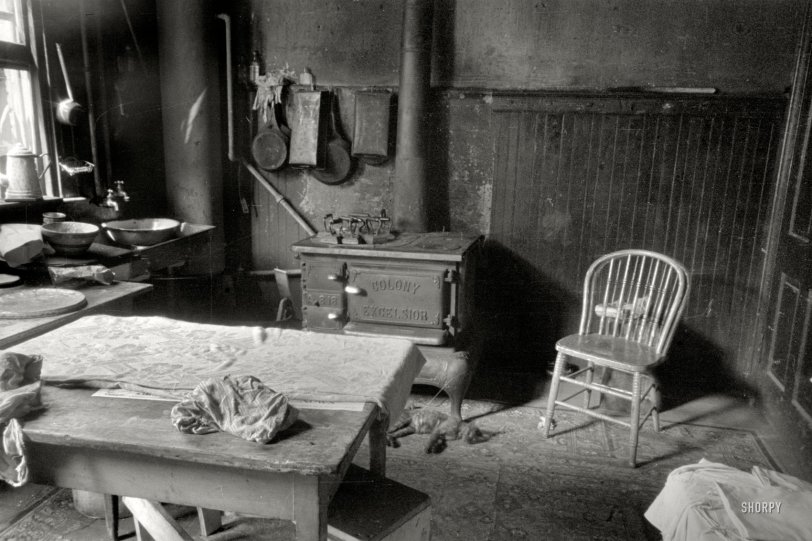


Framed or unframed, desk size to sofa size, printed by us in Arizona and Alabama since 2007. Explore now.
Shorpy is funded by you. Patreon contributors get an ad-free experience.
Learn more.

- Indiana Harbor Belt abides
- Freezing haze
- Corrections (for those who care)
- C&NW at Nelson
- Fallen Flags
- A dangerous job made worse
- Water Stop
- Passenger trains have right of way over freights?
- Coal
- Never ceases to amaze me.
- Still chuggin' (in model form)
- Great shot
- Westerly Breeze
- For the men, a trapeze
- Tickled
- Sense of loneliness ...
- 2 cents
- Charm City
- What an Outrage
- Brighton Park
- Catenary Supports
- Just a Little Before I was Born
- Afternoon normal
- The Flat Iron Cafe survives
- Aging in Place
- Raise your hand
- Good and Bad
- Oh, the 70's
- Nooooooi
- The aluminum tubing
Print Emporium
The Cat in the Kitchen: 1935

November 1935. Washington, D.C. "Kitchen in Negro home near Union Station." 35mm negative by Carl Mydans, Resettlement Administration. View full size.
Question
What's with all the irons on the stove?
Home Business
A domestic fixture for a lot of white families, back when laundry was a labor-intensive and messy job, was the "colored woman who takes in washing." This looks to be her part of her workspace, and the towel over the table her ironing board.
Side-arm water heater
A coil inside the stove heated the water, which rose up through the diagonal pipe to the top of the tank, displacing the cooler water at the bottom, which recirculated into the stove coil. There was no thermostat, and severe burns were not uncommon. But you had hot water, at least until an hour or so after the fire in the stove went out.
Contemporary sources tell us that an iron was invariably the first appliance purchased by newly-electrified households, so I'd say this house had no wiring.
Big family???
So big she likely didn't have time to hang those lovely lace curtains she just ironed!!
Several Irons
Nowadays, we have electric irons that stay hot throughout the job. I'm guessing that in this house, they didn't have electricity, or at least not at electric iron. So they put all the the irons on the stove and, when one started to get cold, they grabbed another one. That's why there are several irons here.
Hot Stuff
With that many irons on the stove, I daresay that the lady of the house does laundry for hire. Notice there is also hot water piped to the sink. The stove likely held a fire year round while she did other folks' hard work.
[Or she had a big family. - tterrace]
Purr
At our house, we call the act of felines parking near a heat source like that "making Baked Cat."
Quite a collection
Looks like the lady of the house does some ironing in her spare time.
Pinch me
'Cause I think that chair just moved by itself!
























On Shorpy:
Today’s Top 5